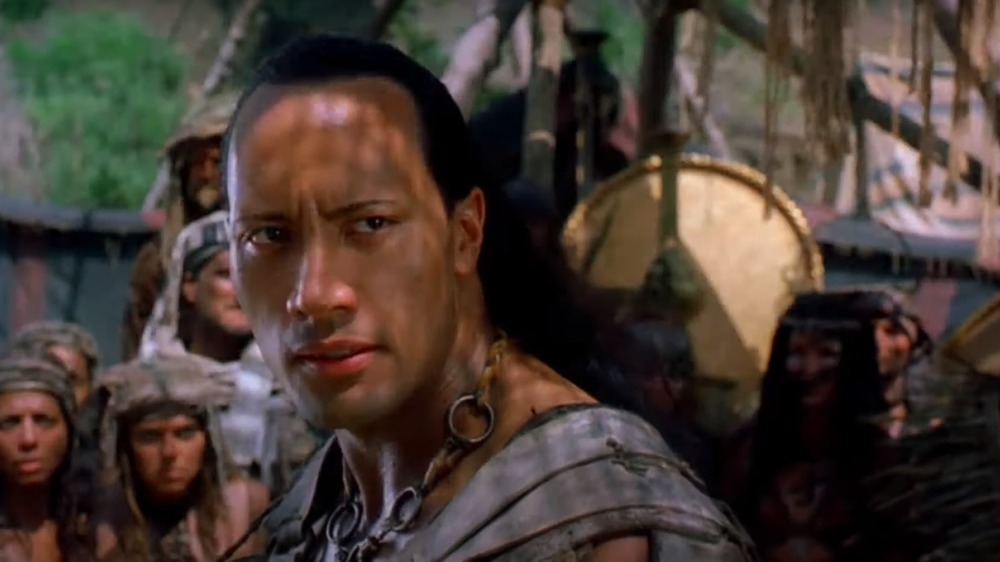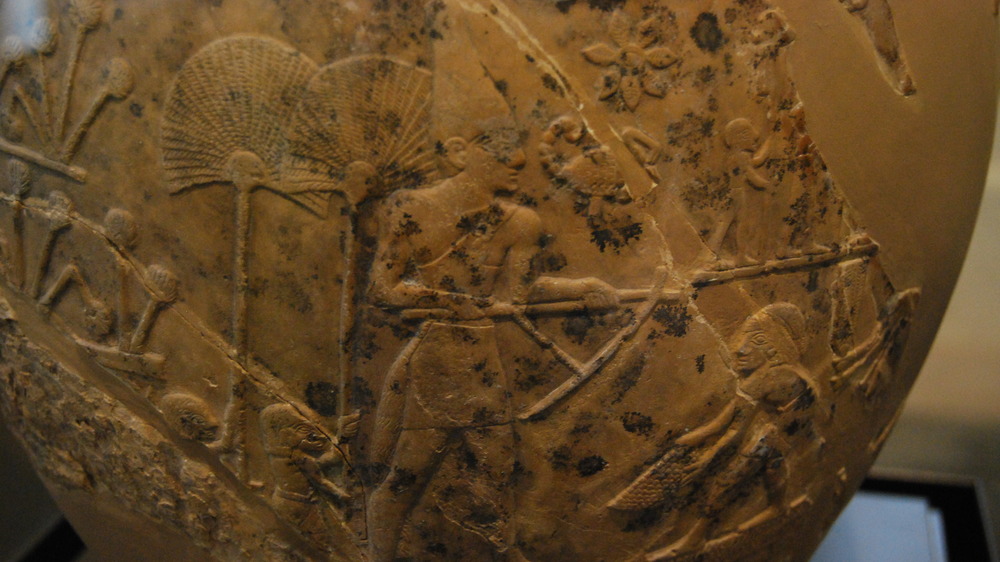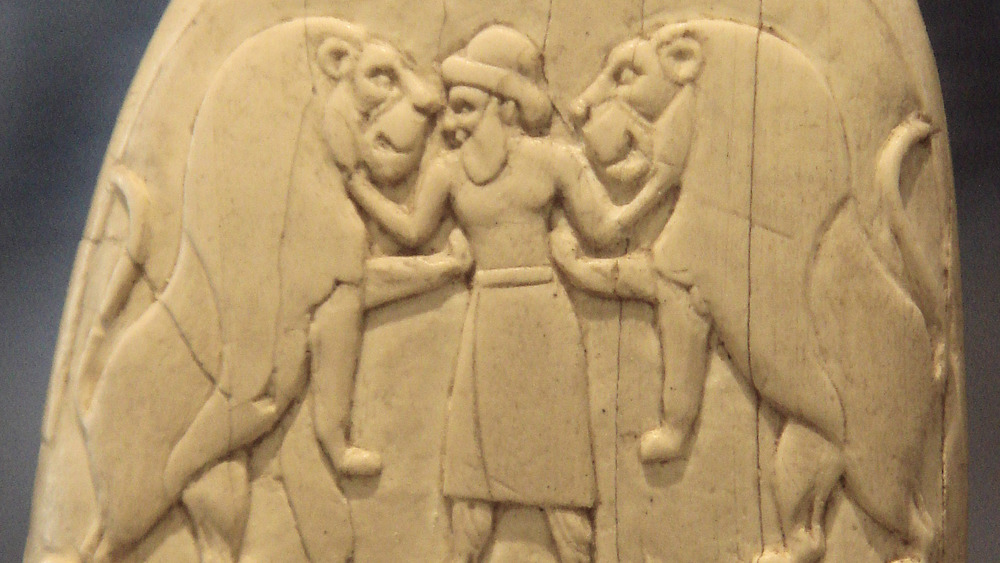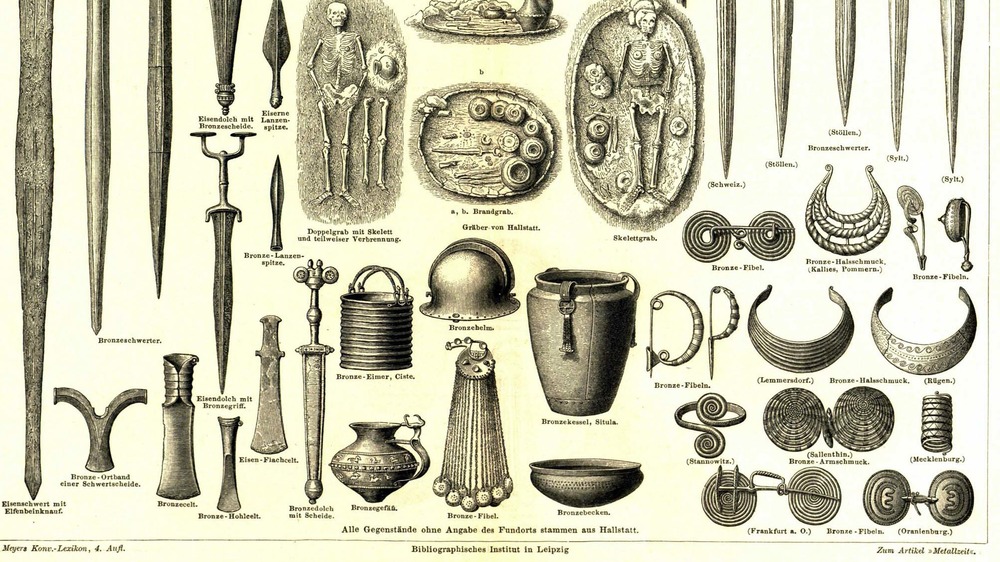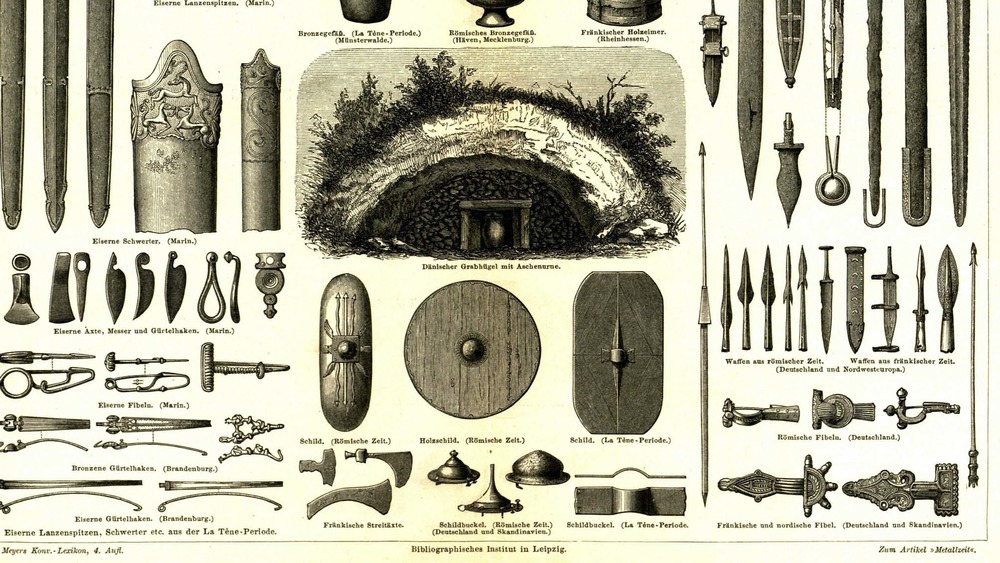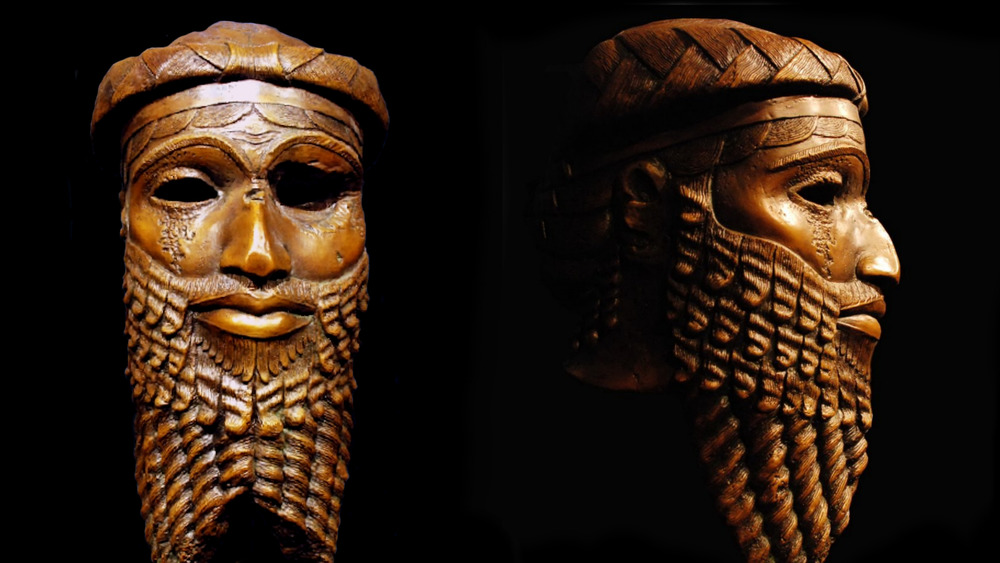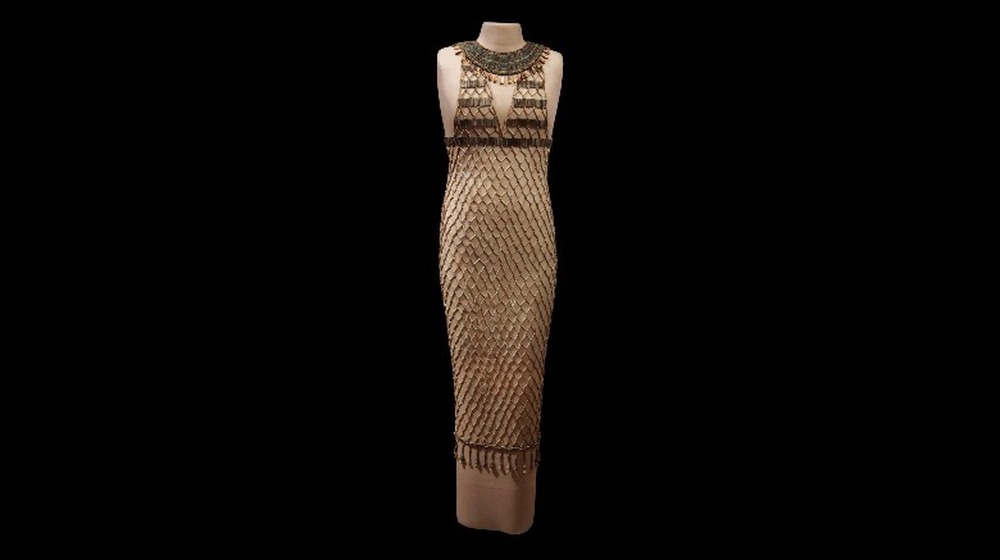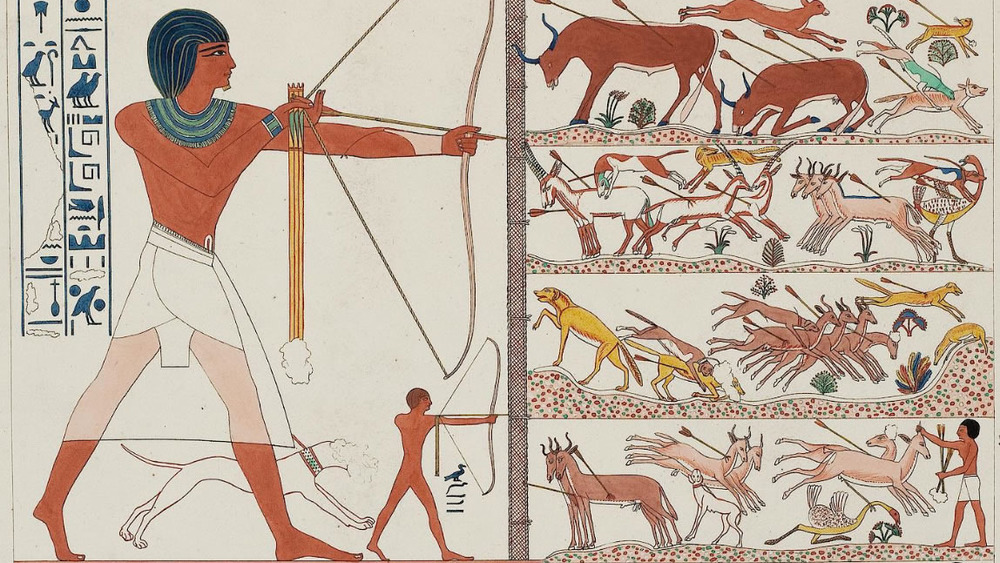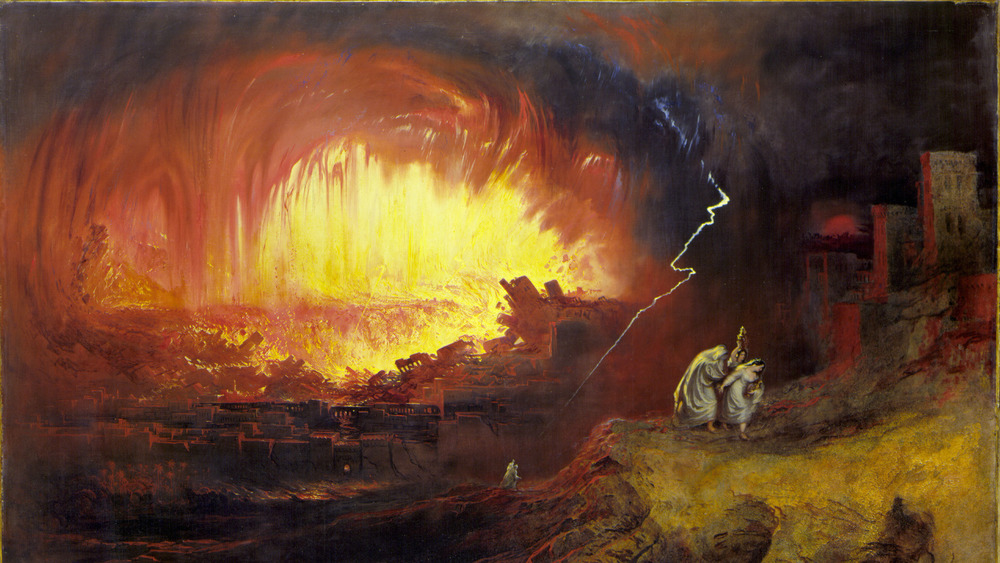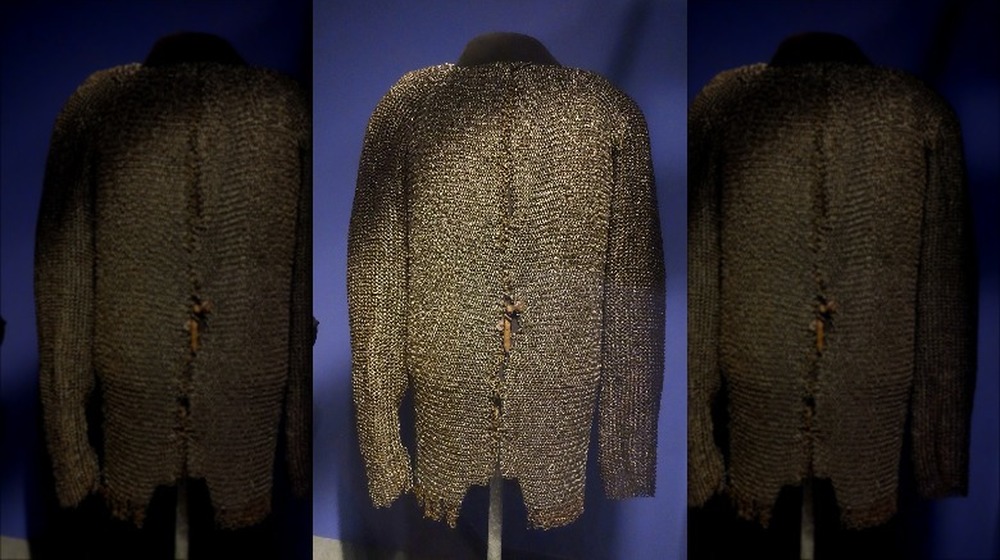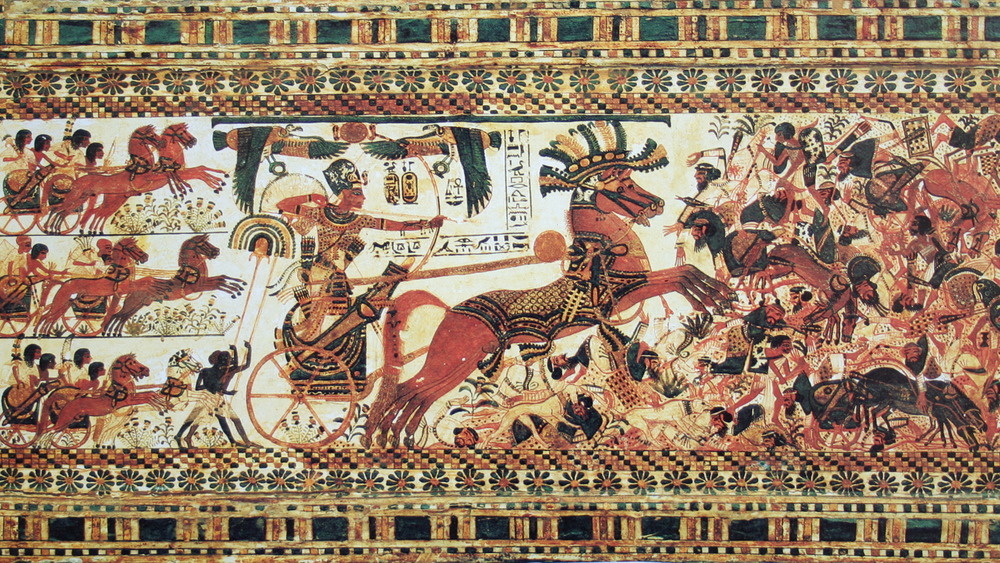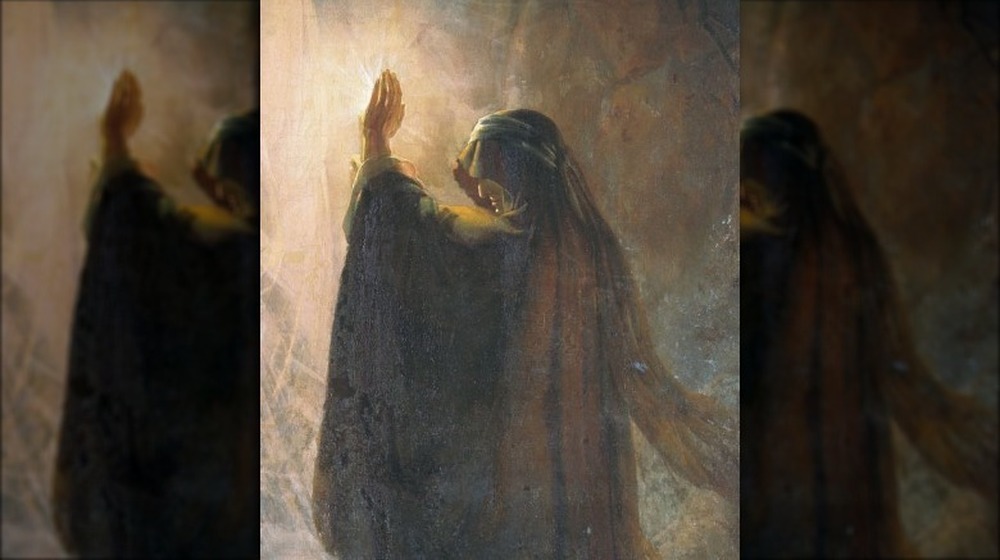What The Scorpion King Movie Gets Wrong And Right About History
Few people who have watched the 2002 action-adventure film The Scorpion King were probably expecting historical accuracy. More likely, they were there to see newbie action star Dwayne "the Rock" Johnson make the transition from wrestling to the film industry. Critics generally didn't key into the film's flashy good time, with barely more than 40% approval on Rotten Tomatoes.
Yet, given how much the Rock graces television and movie screens today, accusations of cheesiness and historical inaccuracy didn't do much to hurt his reputation. In fact, a careful look at some of the details of the movie shows that, as cheesy as it may be, it holds a few real historical tidbits about the ancient world.
According to Screen Rant, The Scorpion King is set about 5,000 years before the 20th century events of its film predecessor, The Mummy. That puts it at about 3,000 B.C.E., well before the construction of the Great Pyramid of Giza, according to National Geographic. While a little bit of manipulation when it comes to exact dates can be forgiven, it's clear enough that the story of The Scorpion King should be taking place in the Bronze Age.
According to History, the Bronze Age covers 3000 B.C.E. to 1200 B.C.E. That's both good and bad news for the film itself, as it lays clear just where The Scorpion King got its real history right and where it goes wrong.
There were actually two Scorpion Kings
Though the title of "Scorpion King" sounds as made up as anything in a movie that's full of historical inaccuracies, it's actually not. In fact, it appears that there was not just one but two ancient Egyptian rulers that went by the name "Scorpion."
However, finding out information about these two Scorpion Kings has proven difficult. That's because, according to Business Insider, they both ruled before the First Dynasty, around 3200 B.C.E. That's long before the Great Pyramid of Giza was a twinkle in some pharaoh's eye, much less a completed structure. Beyond that, historians aren't sure if they were two separate individuals, one person, or even just another name for Narmer, who's often considered the first ruler of a united Egypt. According to the Ancient History Encyclopedia, Narmer is believed to be a ruler from Upper Egypt (the southern part of Egypt) who conquered Lower Egypt (downstream along the Nile from Upper Egypt) and unified the two lands into one kingdom.
As the Encyclopedia of Ancient Egypt reports, the scanty evidence pointing to the existence of a king named Scorpion includes a ceremonial macehead and a few other inscriptions. Scorpion appears to have been a ruler from Upper Egypt who began waging war on Lower Egypt, perhaps setting the stage for Narmer's eventual takeover of the whole territory.
Early ancient Egypt had strong ties to Mesopotamia
The Scorpion King is right about there being strong ties between many Bronze Age cultures, including Egypt and Mesopotamia. Eventually, strong trade networks and societal exchanges made it possible for these two cultures to connect, even over long distances. However, as the Ancient History Encyclopedia points out, it's worth remembering that "Mesopotamia" actually covers quite a few different cultures, many of which were based in cities like Akkad and Babylon. Egypt, once it got going, tended to be more unified over the course of its history.
Regardless of how much you want to lump together all the disparate peoples and places of Mesopotamia, it's pretty clear that there was contact between them and Egypt, as hinted at in The Scorpion King. According to the Journal of the Economic and Social History of the Orient, it's not clear that there was a lot of direct contact, but healthy trading networks exchanged ideas just as well as face-to-face meetings. Many things, from the development of writing systems, to similar art styles, to types of pottery, seem to be shared across the region. A tantalizing jar from the Naqada I people, who were around in the Predynastic period from about 4000 – 3000 B.C.E., even shows evidence of sea-going boats that would have been used by Asiatic peoples like the Mesopotamians.
Characters in The Scorpion King mention steel before it was a thing
The Scorpion King is set about 5,000 years before our time, putting it around 3000 B.C.E. That puts the timeline of the movie pretty solidly in the Bronze Age, which History says ran from about 3300 – 1200 B.C.E. Now, given that this is a Hollywood movie, it's reasonable to fudge the timeline a little bit. After all, what's a couple hundred years when you're talking about some vague time five millennia before our own?
Still, that fudging can only get you so far. When characters mention steel, for instance, savvy viewers can get plucked right out of the movie experience. Sure, this may seem like a minor detail, but the fact that the characters of The Scorpion King seem to be wielding steel-like weapons doesn't work at all.
That's because, as Popular Mechanics reports, steel simply didn't exist for the vast majority of the Bronze Age. This metal is an alloy, or mixture, of iron and carbon, meaning that humans had to intentionally meld the two original metals. That process didn't happen until around 400 B.C.E. in India. Before that, different people had experimented with wrought iron and even nickel-rich iron from meteorites, but the shiny, strong steel wielded by the Rock just isn't right for 3000 B.C.E. At best, he'd have had an eye-catching but easily marred bronze sword instead.
Not all of the weapons in The Scorpion King are genuine Bronze Age tools
While steel wouldn't have been around in the Bronze Age Middle East, some of the weapons seen slicing and dicing in The Scorpion King aren't completely off base. As Weapons Universe illustrates, tools like swords, spears, and axes were pretty common in the region and would have been used by the Mesopotamians and their contemporaries. Bows and arrows were also relatively common in both Mesopotamian and Egyptian militaries, according to Bronze Age Military Equipment. Even the curved sickle-shaped swords used by some characters was a real thing, though some viewers might guess that the curve was a movie invention. In fact, it was a common feature in Sumerian armies hailing from southern Mesopotamia. However, evidence suggests that this style was first developed in 2500 B.C.E., making it about five centuries too late for The Scorpion King.
Other weapons seen in the movie are a bit more of an obvious abuse of the timeline. In one chase scene, Mathayus, played by the Rock, launches himself through some buildings with the use of a catapult. Yet, as Smith College reports, the catapult was invented by the Greeks in 400 B.C.E. Pretty ancient by our standards, sure, but still way too late for Mathayus or anyone else to be messing with a siege machine about 2,500 years before it was supposed to appear.
Akkadians were real people
Though The Scorpion King's script plays pretty fast and loose with who would have been in the Middle East region in around 3000 B.C.E., it does mention that Dwayne Johnson's character, Mathayus, is one of only three remaining true Akkadians. While we might quibble over what, exactly, makes someone a "true" Akkadian, the movie deserves credit for basing the trio off a real Mesopotamian culture.
That said, the Akkadians existed so long ago that their origins are a bit mysterious. According to the Ancient History Encyclopedia, they were based out of the city of Akkad. No one is sure where Akkad was located, nor why it eventually fell. Legend claims that King Sargon was behind its origins, building the city while he united nearly all of Mesopotamia under the Akkadian Empire.
The Metropolitan Museum of Art argues that Sargon may not have single-handedly raised Akkad while he was busy empire building, but it appears that he at least brought plenty of people and trade to the city. In fact, Akkad was so stabilizing for the region that many archaeologists and historians believe that its reign of relative peace allowed for the development of art, writing, science, religion, and other cultural advancements. Mathayus may just as easily have been a pretty city boy as a shirtless, muscular hunk.
There shouldn't be that many Greek people in The Scorpion King
People with Greek names and possible Greek origins are all over The Scorpion King. There's the female lead, Cassandra, for one. Memnon, the main bad guy, also sports a Greek name, as does Philos.
So what? Weren't Greek people all over the ancient world? Well, not exactly. While there were certainly plenty of Greeks hanging out around the series of city-states now called Greece, there's little evidence that they made it all the way across the Mediterranean to Mesopotamian and Egyptian territory by 3000 B.C.E.
Indeed, according to Oxford University Press, the oldest Greek culture, the Mycenaeans, is first recorded around 2000 B.C.E. The Mycenaeans and Egyptians were apparently trading and exchanging ideas around this time, though it's not clear to what extent people from these two cultures were talking to one another. Eventually, the cultural exchange would become more involved, to the point where Greeks ruled over Egypt in the Hellenistic Period beginning in the fourth century B.C.E. Careful readers, however, will have already noticed that, even with massaging the timeline a bit, there simply isn't enough history there to believe that a bunch of Greeks would have been wandering around Mesopotamia and having adventures with the Rock in 3000 B.C.E.
Costumes in The Scorpion King have a bit of historic truth
At the time The Scorpion King debuted in 2002, quite a few commentators decried the costumes in the film. To be sure, the skimpy looks sported by the sorceress Cassandra could be pretty shocking to today's viewers. Yet, someone from ancient Egypt, if asked what they thought of Cassandra's revealing clothing, might only shrug.
Egyptians especially weren't too worried about showing some skin. They did live in a desert, after all. According to the Ancient History Encyclopedia, women in Ancient Egypt typically wore a skirt or kilt, though you wouldn't always find them wearing clothing on their torsos. Some dresses worn by higher-class women would have been made out of translucent linen fabric that didn't conceal much. Archaeologists have even found examples of beadnet dresses that may have been paired with a linen shift but still would have revealed quite a bit of the wearer's shape. Both men and women wore makeup and often removed body hair.
The Mesopotamians, meanwhile, would have been wearing somewhat more clothing than their Egyptian neighbors. According to Britannica, early Mesopotamians wore sheepskin skirts with the wool worked into decorative shapes. Woven wool fabric came in later around 2500 B.C.E. Tunics and shawls eventually joined the fashion team in many Mesopotamian households, along with plenty of jewelry, wigs, and makeup. However, the time period of The Scorpion King would have seen many people in somewhat simpler dress.
No one should be wearing pants in The Scorpion King
Mathayus is often seen adventuring across the landscape of The Scorpion King in tight leather pants and without a shirt. This was Dwayne Johnson's film debut, after all, when he was better known as an often shirtless, muscular wrestler than as a charming leading man. Given the fashion trends of the Bronze Age, no one can fault him for missing a top, but, historically speaking, those pants shouldn't be there, either.
According to Science News, the earliest evidence of pants-wearing comes from the Central Asian steppe of 3,000 years ago. That's too late for The Scorpion King, which is set roughly 5,000 years before our time. Even if the difference of a couple thousand years was forgiven, the geographical distance between Central Asia and the kingdoms of Mesopotamia still makes the look a little suspect.
This all means that the Rock should have ditched his leather pants and worn a kilt like the real kings and warriors of the ancient past. Johnson, being a 21st century American man, might have balked at the idea back in 2002, but it would have been far more historically accurate. He might have been quite a bit more comfortable, too, given the desert heat and the general sweatiness suffered by many actors in The Scorpion King.
The Scorpion King contains half-truths about the city of Gomorrah
In The Scorpion King, the film's characters meet in the city of Gomorrah, the villain's stronghold. Viewers who are familiar with their Bible stories will recognize the name of the city, first mentioned in the Book of Genesis. In chapter 18 of Genesis, God proclaims that Gomorrah and its sister city, Sodom, are doomed "because their sin is very grievous." The cities and their inhabitants, apart from Lot's family, are destroyed in an unidentified disaster.
But, if it's to be believed that The Scorpion King's Gomorrah is the same as the Biblical one, there are some issues pretty early on. Genesis 13:12 says that Lot settled in Sodom, amongst the "cities of the Plain," a common Biblical reference to a number of cities near the Dead Sea. Yet, there's hardly a puddle to be seen in the movie, much less a huge body of water.
More broadly speaking, it's not even clear whether or not Gomorrah ever existed. According to The Washington Post, scientists have been exploring the region since at least 1847. While they've uncovered evidence of people living there since the Bronze Age and even clay tablets mentioning Sodom directly, no one can agree whether or not they've found the cities. Some argue that Tall el-Hammam, a large Bronze Age settlement in Jordan, might fit the bill. Then again, argue skeptics, finding a big city is no evidence that the Gomorrah depicted in the Bible is true to life.
Armor in The Scorpion King is all wrong
Eagle-eyed viewers, especially those with an interest in military history, will notice that the particular kind of armor sported by the warriors in the movie doesn't fit. That's because some of them are wearing chain mail.
According to Britannica, chain mail was a type of armor made out of metal rings. These rings could have been individually sewn to fabric or leather. In later versions of the technology, they were interlocked to form a metal fabric of its own. However, the earliest examples of chain mail armor come from the late Roman period. Once again, that's way, way too late of a technological advancement for the people of 3000 B.C.E.
If chain mail is all wrong, then what type of armor should these people have worn? The particular type of body protection varied from culture to culture, but the Mycenaean people could offer up a good alternative. Ancient World Magazine reports that archaeologists excavating the Mycenaean site in Dendra, Greece, uncovered a set of Bronze Age armor known as a "panoply." This style consists of overlapping metal plates and a metal helmet that lines up with a description in the works of the ancient Greek poet, Homer.
Would an Akkadian have worn this? History on the Net says that it was rare for the Mesopotamians to have worn armor, though they might have used armored cloaks and leather padding as protection. Either way, it's better than the anachronism of medieval chain mail.
No one in The Scorpion King should be riding a horse
Quite a few characters employ horses throughout the movie, including riding on horseback. The hero, Mathayus, even teams up with a horse thief, Arpid, who helps him escape from a near-deadly encounter with fire ants. That's great and all, except horses shouldn't be there in the first place.
University College London says that horses were first introduced in Egypt sometime after 1700 B.C.E. As these animals became more established in Egypt and Nubia to the south, they were fully incorporated into culture and transportation. Egyptians typically used horses to pull chariots and weren't usually recorded riding on horseback.
So, the time doesn't make sense for Egyptian horses, but what about equines in Mesopotamia farther to the east? As the Equine Veterinary Journal outlines, that doesn't quite work out, either. The earliest known evidence of domesticated horses goes back to around 4000 B.C.E., when the Indo-European people living in what's today Ukraine began to develop a horse-based nomadic lifestyle. Yet, there's no evidence that horses made it all the way south into Mesopotamian territories until 2000 B.C.E. You could conceivably pretend that horses were somehow fully part of Mesopotamian life around 3000 B.C.E, but the lack of evidence makes this a pretty unsteady proposition for anyone trying to shore up the historical accuracy of The Scorpion King.
The ancient world took magic as seriously as The Scorpion King
Whether or not you personally believe that magical practitioners can have an effect on the world around them, evidence shows that ancient people were true believers. As per the Ancient History Encyclopedia, ancient Egypt was packed full of magical artifacts, while Heka was often honored as the deity of magic. He was an all-encompassing force, so pervasive that he never had a dedicated temple of his own. He also appears to have been on the peoples' minds since the Predynastic Period spanning 6000 – 3150 B.C.E., putting these sorts of magical practices well within the scope of The Scorpion King.
The Mesopotamians weren't lax on magical belief, either. Much like the Egyptians, their magic was part of everyday life and religious belief. According to the Metropolitan Museum of Art, the Mesopotamians were especially organized in this respect, producing "handbooks" of clay tablets describing rituals and spells used for a variety of purposes.
It's clear that people in both Egyptian and Mesopotamian societies were able to gain plenty of power via their spiritual connections. While you may personally doubt that Cassandra, the sorceress who aids Mathayus, has true magical powers, there's no denying that someone with her skill set would have been a big deal.
